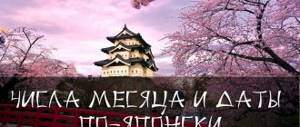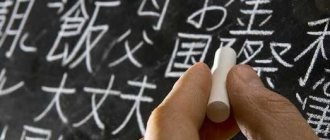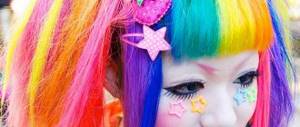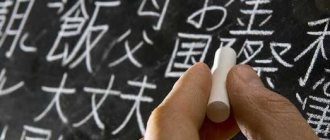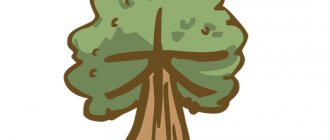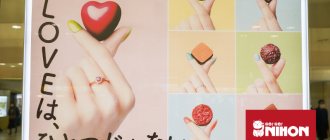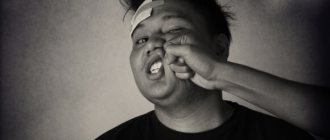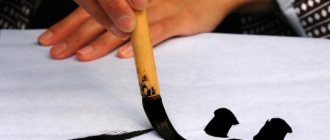The days of the week in Japanese begin on Sunday. As in North America, in the Land of the Rising Sun this day is taken to mark the beginning of a new cycle. A grammatical feature of the Eastern language is the presence of only past and present-future tenses without a clear distinction of the future. To understand whether we are talking about the current moment or one that is yet to come, analyze the context. The past has individual grammatical characteristics. Indicating the days of the week in the body of the phrase helps the listener understand what the person is talking about and what time period the described situation belongs to.
Land of the Rising Sun
Dates
Writing dates is similar to using counting suffixes, one each for year, month and day.
- ~年【~ねん】 – year counter
- ~月 【~がつ】 - month counter
- ~日【~にち】 – day counter
The year counter is very simple as it has no variations in reading.
However, there are variations for months and a whole bunch of exceptions for days of the month. The two lists below list all the months in the year and the days in the month. Special readings or changes in reading are specifically highlighted. Months
| Month | Kanji | Reading |
| What month | 何月 | なん・がつ |
| January | 一月 | いち・がつ |
| February | 二月 | に・がつ |
| March | 三月 | さん・がつ |
| April | 四月 | し・がつ |
| May | 五月 | ご・がつ |
| June | 六月 | ろく・がつ |
| July | 七月 | しち・がつ |
| August | 八月 | はち・がつ |
| September | 九月 | く・がつ |
| October | 十月 | じゅう・がつ |
| November | 十一月 | じゅう・いち・がつ |
| December | 十二月 | じゅう・に・がつ |
Days of the month
| Day | Kanji | Reading |
| What a day | 何日 | なん・にち |
| 1 | 一日 | ついたち |
| 2 | 二日 | ふつ・か |
| 3 | 三日 | みっ・か |
| 4 | 四日 | よっ・か |
| 5 | 五日 | いつ・か |
| 6 | 六日 | むい・か |
| 7 | 七日 | なの・か |
| 8 | 八日 | よう・か |
| 9 | 九日 | ここの・か |
| 10 | 十日 | とお・か |
| 11 | 十一日 | じゅう・いち・にち |
| 12 | 十二日 | じゅう・に・にち |
| 13 | 十三日 | じゅう・さん・にち |
| 14 | 十四日 | じゅう・よっ・か |
| 15 | 十五日 | じゅう・ご・にち |
| 16 | 十六日 | じゅう・ろく・にち |
| 17 | 十七日 | じゅう・しち・にち |
| 18 | 十八日 | じゅう・はち・にち |
| 19 | 十九日 | じゅう・く・にち |
| 20 | 二十日 | はつ・か |
| 21 | 二十一日 | に・じゅう・いち・にち |
| 22 | 二十二日 | に・じゅう・に・にち |
| 23 | 二十三日 | に・じゅう・さん・にち |
| 24 | 二十四日 | に・じゅう・よっ・か |
| 25 | 二十五日 | に・じゅう・ご・にち |
| 26 | 二十六日 | に・じゅう・ろく・にち |
| 27 | 二十七日 | に・じゅう・しち・にち |
| 28 | 二十八日 | に・じゅう・はち・にち |
| 29 | 二十九日 | に・じゅう・く・にち |
| 30 | 三十日 | さん・じゅう・にち |
| 31 | 三十一日 | さん・じゅう・いち・にち |
For completeness, all days of the week are listed here.
- 何曜日 【なん・よう・び】 - what day of the week
- Monday
- Tuesday
- Wednesday
- Thursday
- Friday
- Saturday 【ど・よう・び】 – Saturday
- Sunday
What do the Japanese days of the week mean?
A lesson about the calendar would not be complete without the meaning of the words used by the Japanese. The first character in the word is taken either from the name of the Moon, the Sun, or from one of the planets: Mars, Venus, Mercury, Saturn, Jupiter. The Moon in Eastern culture is identified with yin energy, the Sun is filled with yang forces. Each planet is associated with the element wu-sin.
Names of 5 planets involved in designating the days of the week:
- Mars – Kasei;
- Mercury – Suisei;
- Jupiter - Mokusei;
- Venus – Kinsei;
- Saturn - Dosei.
As in the case described above, the names are formed from one unique symbol and one repeated for everyone, indicating belonging to the planets.
Interesting to know
Korean and Classical Chinese use a similar Japanese time system.
According to many linguists, it is easier to learn the Japanese names of months and days of the week if you have already studied the German language. In particular, Sunday and Monday are identical in meaning to English and German words: in all three, Sunday is the day of the sun, Monday is the day of the moon. In the Slavic language group, modern Chinese, a different principle applies: words are formed taking into account the numbers of days.
Another good principle of memorization is mnemonic. For each of the words you can come up with a suitable association. So, in the word “money” (お金) the main symbol is the same as in the name Friday. Since salaries are often paid on the last working day of the week, you can associate these two words and remember the name of the fifth day through the word “money”.
Katakana
Date formats
The date format used in Japan is similar to the international format used in many other countries around the world: year, month, day, in that order. Again, using numbers to make reading easier is quite common.
In addition, when filling out official documents, you may come across a different calendar, traditional in Japan, based on the reign of each emperor. The chronology in such a calendar begins anew from year 1 (called 元年【がん・ねん】) at the beginning of the reign of each new emperor, along with the name of the era. For example, the era of 「平成」 began in 1989, therefore 2009 would be 平成21年. If you live in Japan, you may find it helpful to remember the current year and your date of birth according to the Japanese calendar. The eras for approximately 100 previous years are listed below. You can also search the Internet for convenient converters or tables with all the years.
- 平成【へい・せい】 - Heisei era (1989/1/8 –)
- 昭和 【しょう・わ】 - Showa era (1926/12/25 – 1989/1/7)
- 大正 【たい・しょう】 - Taisho era (1912/7/30 – 1926/12/25)
- 元年 【がん・ねん】 - the first year of an era, lasts until the end of that year (December 31)
Examples
- 2?・か】2009/12/24
- 2010年4月1日(木曜日)よう・び)】April 1, 2010, Thursday
- The・じゅう・にち】1981/11/30
- 1989/9/9
Names of the days of the week in Japanese
Today I will publish an article by my Japanese friend, with his permission) An interesting story about how the days of the week were formed in Japanese, as well as how to write the days of the week in Japanese.
By the way, if you don’t yet know about reading hieroglyphs or the history of their origin, then I advise you to fill out the form on the right “Get a free video lesson on the Japanese language!” to receive free video lessons on the Japanese language for beginners by email, where many issues will be discussed, including writing and reading hieroglyphs.
“Today you will learn about how to write the days of the week in Japanese. I will not make a long excursion into world history, but I will briefly note that the current names of the days of the week, as well as the general system of dividing the month into four parts of seven days, came to Japan from China (as, incidentally, almost any manifestation of civilization and culture came to Japan from China). In the same way, by the way, this tradition came to the rest of the world, spreading throughout the world - from China. That is, when the pitiful Europeans had just come down from the trees and were in full swing exploring the caves, and the wild Japanese were recklessly slaughtering each other, in China at that time there was a wild (by our standards), but huge and strong state. It included astronomers, astrologers, healers and other creative class.
In China, the system of “five primary elements” (五行, “wuxing”) arose - fire (火), water (水), wood (木), metal (金), earth (土). Then, when ancient Chinese astronomers were able to identify five planets in the sky: Mars, Mercury, Jupiter, Venus, Saturn, they immediately compared the five elements. A little later, the idea of the “seven luminaries” (七曜) arose, based on five planets plus the Moon (月) and the Sun (日), which gave birth to the current week with its names almost all over the world with some exceptions. Exceptions, by the way, indicate either a powerful culture of its own, or an extremely isolated culture. In this regard, by the way, Japanese culture is not isolated (although all Japanese are proud of their exclusivity and isolation) - there is practically nothing of its own in it (except paganism), everything is Chinese.
Hieroglyphs
So, let's get to the hieroglyphs. I’ll start with a not very simple sign that represents the concept of “day of the week.” In Figure 1 we have the character Ё: (曜), the colon after the sign means a long vowel sound. The hieroglyph consists of as many as 18 (eighteen) strokes and is very often written in hiragana (よう). Initially, this sign meant “celestial body,” but over time, when the luminaries began to be used to designate days of the week, the sign transformed its basic meaning into “day of the week.” This sign is taken at the end of the second grade, since it is too difficult for first-graders, but we are adults, we can handle it.
Day of the week
Due to the specificity of the sign, there is only one on-reading: ヨウ, and there are no kun-readings at all. Examples: 土曜, どよう - Saturday (shortened name). 七曜, しちよう - seven days of the week; seven luminaries (Sun, Moon and five planets: Mars, Mercury, Jupiter, Venus and Saturn).
Let us now analyze the structure of the hieroglyph. I will also note that a certain combination of traits that is found in various hieroglyphs is called a “radical”. Our hieroglyph consists of three main parts: left, upper right and lower right. The left side is the familiar radical “day” (日). When writing, you should pay attention to the fact that it is smaller in size than the overall vertical size of the hieroglyph.
In the upper right part there are two identical radicals, which are simply Katakan Yo (ヨ). The lower right part of the hieroglyph is represented by an interesting radical, the name and spelling of which should simply be remembered, since it is involved in the writing of more than a hundred frequently used hieroglyphs. The radical "old bird" is called. I don’t know why, maybe because he looks like an old bird. It reminds me of a half-broken lead grid from a battery (fishermen should understand what I mean). You just need to remember this radical.
Now the writing order is: 1-4. We draw the radical “day” (see last lecture). 5-7. We draw the first Yo (ヨ): first the upper horizontal one along with the vertical lines, then the middle horizontal one, then the lower horizontal one. 8-10. Draw the second Yo (ヨ). 11-18. Drawing the “old bird”: ….1. A short oblique stroke, which I call a “cap” (see last lecture). ….2. Below the cap is a vertical bar (together they form a short form of the radical "person" (イ), which is used in a huge number of characters and which represents the Katakana letter I (イ)). ….3. Again the “cap” is at the same level as the first one, but to the right and a little shorter. ….4. From the “cap” of the “person” to the right we draw a horizontal line. ….5. From the lower end of the second “cap” down, draw a vertical line. ….6-7. From the first vertical line to the right, we draw two intermediate horizontal lines, which are slightly shorter in length than the top horizontal line. ….8. Draw a lower horizontal line of the same length as the upper one. As you can see, there is nothing particularly complicated here.
Monday
Go ahead. Like Russian people, let's start on Monday. In Figure 2 we have the character GETSU (月). Monday will be 月曜日(Getsuyo:bi). We discussed this hieroglyph in the last lecture. So we won’t dwell on it.
Tuesday
The figure shows the character KA (火), meaning “fire”. This hieroglyph also represents the planet Mars, which seems quite logical. The sign consists of four lines. The Chinese (on) reading for the sign is one: カ. Example from the book: 火事, かじ - fire. Here I would like to note that in Japan, due to the crowding and specificity of the materials used for construction, fires were a terrible disaster: if one house caught fire, then, as a rule, the entire village burned out. For this reason, the caught arsonist was destined for a terrible execution: he was roasted alive. They tied the attacker with a chain to a pole, and a strong fire was lit a few steps away from him. The convict was not burned, but fried, which was much longer and more painful than just burning. A terrible death, and yet, arson occurred regularly.
Japanese (kun) readings: ひ and very rare ほ. Examples: 火, ひ - fire, light. 山火事, やまかじ - forest fire. Japan is a mountainous country, and therefore what we call a “forest” fire, they actually have a “mountain” fire. 火山, かざん - volcano (sounds very funny to us: “cauldron” - this is how a cauldron is imagined, where hot lava gurgles instead of pilaf). 火曜日, かようび - Tuesday. 火星, かせい - Mars.
The red diamond signals to us that we should not confuse the characters 火 (“fire”) and 大 (“big”).
Writing order: 1. The radical “drop”, which is used in a colossal number of hieroglyphs. Draw with a light stroke from top to bottom. The slant varies depending on the handwriting. It happens both from left to right (canonical) and from right to left - this is not so important. 2. The familiar “cap”. Here the slope is strictly from right to left, from top to bottom. "Cap" is longer than "drop". 3-4. Radical "man", full form. First, from top to bottom, from right to left, the first oblique stroke, the main one (Katakan HO (ノ)), is drawn, then the second oblique stroke, the auxiliary one, similar to a “leg”, comes out of its middle.
Wednesday
In Figure 4 we have the character SUI (水), meaning “water”. Like the previous hieroglyph, this sign denotes one of the elements, the primary elements. Then the sign was compared to the planet Mercury (which is as logical as the comparison of fire to Mars), and after that to the day of the week “Wednesday”. The hieroglyph consists of four lines.
There is only one reading: スイ. Example: 海水, かいすい - sea water.
Kun reading is also one: みず. Examples: 水, みず - water. 水道, すいどう - water supply. 水曜, すいよう - Wednesday. 水溜まり, みずたまり - puddle. 水星, すいせい - Mercury.
The red diamond warns not to confuse 水 (“water”) with the hieroglyph 木 (“tree”), which is next in line. Externally, especially from afar, it is very similar. However, the way of writing is completely different. When writing, you should pay attention to “hane” - the hook at the end of the vertical line, which is not in the character 木.
Writing order:
1. Vertical “hook”. I'll backtrack a little. Children may not know, but a gaff is a long stick with a hook at the end that is used to pull something up on the water, as well as to pull structures apart in case of fire. The Japanese word for "hook" is "hanebo" (はねぼう), which literally means "notched pole". It is this “hook” that is used in our hieroglyph “water”, as well as in many other hieroglyphs. It should be clearly distinguished from a simple vertical line. 2. A slightly oblique katakana FU (フ) to the left of the “hook”. 3. Our favorite “cap”. 4. “Leg” from the radical “man”.
It should be noted that there is a great temptation to write the last two strokes in one stroke, like the hiragana KU (く). However, this is wrong. The Japanese write these two features separately (albeit with one stroke), which in cursive writing is expressed in the appearance of a characteristic “pretzel” at the junction of these two features. We don’t care about cursive writing yet, it’s important to just remember the correct writing order. If you initially lay down the right rules for yourself, then this will subsequently lead to the formation of beautiful handwriting, which always evokes sincere respect from the Japanese.
Thursday
Next we have Figure 5 and the character MOKU (木), meaning “tree” - one of the primary elements in the Chinese tradition. Later this element was associated with the planet Jupiter, and after that with the day of the week “Thursday”.
The sign consists of four lines. Onny readings: ボク, モク. Examples: 大木, たいぼく - tall (large) tree 材木, ざいもく - timber, boards.
Kun readings: き and rare こ. Examples: 木, き - tree; ~の - woody, wooden. 木陰, こかげ - shadow from a tree; ~で - under a tree, in the shade of trees. 木曜日, もくようび - Thursday. 木星, もくせい - Jupiter.
We remember that from afar a hieroglyph can be confused with the hieroglyph “water” and come to Wednesday instead of Thursday, for example. So the warning is not idle.
The writing is very simple - we draw the character HON (本), which we already know, but without its last horizontal line: 1. Horizontal line. 2. Vertical bar. 3. Left branch. 4. Right branch.
Friday
Figure 6 shows the hieroglyph KIN (金), which initially means “metal” (one of the five primary elements), then “gold”, then, of course, “money”. Later it was associated with the planet Venus, and after that with the day of the week “Friday”. It should be noted that this hieroglyph acts as a radical in a huge number of other hieroglyphs, usually denoting metals, metal products or tools for working with metals. So I strongly recommend memorizing this sign. It consists of eight features.
Onny readings: キン (ギン), コン. Examples: 現金, げんきん - cash; ~な - mercantile, tight-fisted. 金色, こんじき, きんいろ - the color of gold; ~の - golden.
Kun readings: かね and rare かな. Examples: 金, かね is a slang name for money, like our “grandmother”. That's not really what normal people say. お金, おかね - money. This is a normal name, that’s what everyone says. 金持ち, かねもち - rich man (literally: “holding money”). 金曜, きんよう - Friday. 金星, きんせい - Venus. 金谷, かなたに - Kanatani - the surname of one of my friends, a very good climber (master of sports level), can be translated into Russian as Zlatodolskaya (from “Golden Valley”) - a rather aristocratic surname. However, she got married and now took her husband’s surname.
Let's look at the structure of the hieroglyph. We see the upper part, represented by the radical “roof,” and the lower part, somewhat reminiscent of the hieroglyph 立 (“stand”). When writing, you should pay attention to the fact that the vertical line does not extend beyond the horizontal line at the top (the Chinese often “sin” with this, since in many radicals in this combination the vertical line actually extends upward. In this sense, we should teach Japanese hieroglyphs are simpler than for the Chinese, no matter how funny it may sound). Also, the bottom horizontal line should be longer than the other horizontal lines. Well, I’ll add on my own behalf that, as a rule, the “roof” is drawn as huge, literally containing the rest of the sign, and not just covering it.
Writing order. 1-2. “Roof” (which is, in fact, a slightly modified radical “man” 人, which, located on top of other radicals, turns into “roof”) - the left half, then the right half. 3-4. Two horizontal lines, as in the number two (二). 5. Vertical bar. 6. The familiar “drop”. 7. Our favorite “cap”. 8. Long lower closing horizontal line. Closing - because it “closes” the entire hieroglyph. Now this may cause some confusion, but pretty soon you will get used to it, and you will develop a sense of “opening”, “closing” hieroglyphs, etc.
Saturday
In Figure 7 we have the character DO (土), meaning “earth” (primary element), then associated with the planet Saturn, and after that with the day of the week “Saturday”. The sign consists of three lines.
On readings: ド, rarer ト. Examples: 土足, どそく - ~で to be shod; in (dirty) shoes. This also includes a warning that can be seen many places in Japan: 土足禁止, どそくきんし - Take off your shoes! (literally: “shoes are prohibited”). 土地, とち - a piece of land; earth, soil; terrain; ~の - local.
Kun reading: つち. Examples: 土, つち - land (in the broadest sense: soil, dirt, arable land, native land, etc.). 風土, ふうど - climate. お土産, おみやげ - gift, gift, souvenir. Here I will again make a digression. This word is important to know, because according to Japanese tradition, when you go somewhere (on vacation, on a business trip, on a weekend excursion), you must bring some kind of souvenir to your colleagues and family (“omiyage”). It doesn't have to be anything expensive; a box of cookies is fine, as long as EVERYONE gets a cookie. This applies to everyone, both superiors and subordinates: everyone always brings omiyage. The etymology of this word is not completely clear to me. Obviously, the word is originally Japanese (“wago”, 和語). The pronunciation may go back to the “elegant box”, or to the now lost verb “miyagu” - you need to check ancient dictionaries. The spelling obviously simply conveys the meaning of the concept and has no bearing on the pronunciation. According to the meaning of the characters, “omiyage” carries the meaning of “fruit, product of (a given) area,” which perfectly reflects this concept. 土曜日, どようび - Saturday. 土星, どせい - Saturn.
The red diamond encourages us not to confuse the similar characters 土 (“earth”), 士 (“samurai”), which are extremely similar (!!), as well as the character 工 (“technique”), which, in my opinion, is not very similar to土 and 士. In my opinion, the hieroglyph 上 (“top”) is much more similar to 土.
When writing, you should pay attention to the fact that the bottom horizontal line must be LONGER than the top. Well, I’ll say that if you make the upper horizontal line longer than the bottom, you will get “samurai” - the hieroglyph 士.
Writing order: 1. Upper short horizontal line. 2. Vertical bar. 3. Lower long closing horizontal line.
Well, with Figure 8 we conclude today’s lecture with the character NICHI (日), already known to us, meaning “sun” and “day”. Sunday in Japanese will be 日曜日(nichiyo:bi) Since we discussed it at the last lecture, I suggest looking at the detailed description there (I will also post these materials on the site soon).” And if you want to learn how to effectively learn hieroglyphs, follow the link and you will learn all the details.
Author: Andrey Mezentsev
As you can see, these days of the week in Japanese are not that difficult 
We recommend:
Time
We already learned how to tell time in one of the previous chapters, so we'll quickly repeat it.
- ~時 【~じ】 – hour counter
- ~分【~ふん】 – minute counter
- 午前 【ご・ぜん】 — AM
- 午後 【ご・ご】 — PM
- 半【はん】 - half
Variations in reading the clock
| Hour | 4 | 7 | 9 |
| Kanji | 四時 | 七時 | 九時 |
| Reading | よ・じ | しち・じ | く・じ |
Variations in reading minutes
| minutes | How many minutes | 1 min. | 3 min. | 4 min. | 6 min. | 8 min. | 10 min. |
| Kanji | 何分 | 一分 | 三分 | 四分 | 六分 | 八分 | 十分 |
| Reading | なん・ぷん | いっ・ぷん | さん・ぷん | よん・ぷん | ろっ・ぷん | はっ・ぷん | じゅっ・ぷん |
Examples
- 1時1分 【いち・じ・いっ・ぷん】 – 1:01
- 【ご・ご・よ・じ・よん・じゅう・よん・ぷん】 — 4:44 PM
- 午前10時半 【ご・ぜん・じゅう・じ・はん】 – 10:30 AM
Different relative time periods
Additionally, there are terms such as yesterday, today, tomorrow, last year, this year, next year, etc. that you can use to refer to different relative periods of time.
Japanese Various Relative Time Periods
The table above shows the various relative time periods commonly used.
Please note that there are two readings for some time periods, such as tomorrow, the day after tomorrow, etc. The second reading is usually used for formal occasions.
Time intervals
We need to learn a few more counting suffixes to express a length of time, versus a fixed date or time. This counter is attached to a date or time to indicate the duration of that time.
- ~間【~かん】 - period of time
- ~週間【~しゅう・かん】 - period of time in weeks
- ~ヶ月 【か・げつ】 - period of time in months
Although the use of these counters is very simple, there are several variations in the reading. In particular, 【一日】 usually means the first day of the month and is read as 「ついたち」, but can also mean a time interval of one day and is read as 「いちにち」.
- 一日 【ついたち】 - first day of the month
- 一日【いち・にち】 - a period of time of one day
- 一週間【いっ・しゅう・かん】 - a period of time of one week
- 一ヶ月 【いっ・か・げつ】 - a period of time of one month
- 十ヶ月 【じゅっ・か・げつ】 - a period of 10 months
What hieroglyphs are made of
The Japanese language is characterized by alphabetic and hieroglyphic writing. Two alphabets are used: for native and borrowed words. Hieroglyphs are simplified and modified symbols that came from China, as well as those that appeared later under the influence of the requirements of the time. Since time notation has been used for a long time, katakana and hieroglyphs are used to write words. The name of each day is formed by three symbols: an individual name, an indicator of belonging to the days of the week, and the word “day”. When writing, adults use only hieroglyphic characters, children use katakana. In textbooks, the entire calendar is written in both hieroglyphs and katakana. The alphabetical decoding is written above the word in small characters.
Hiragana

